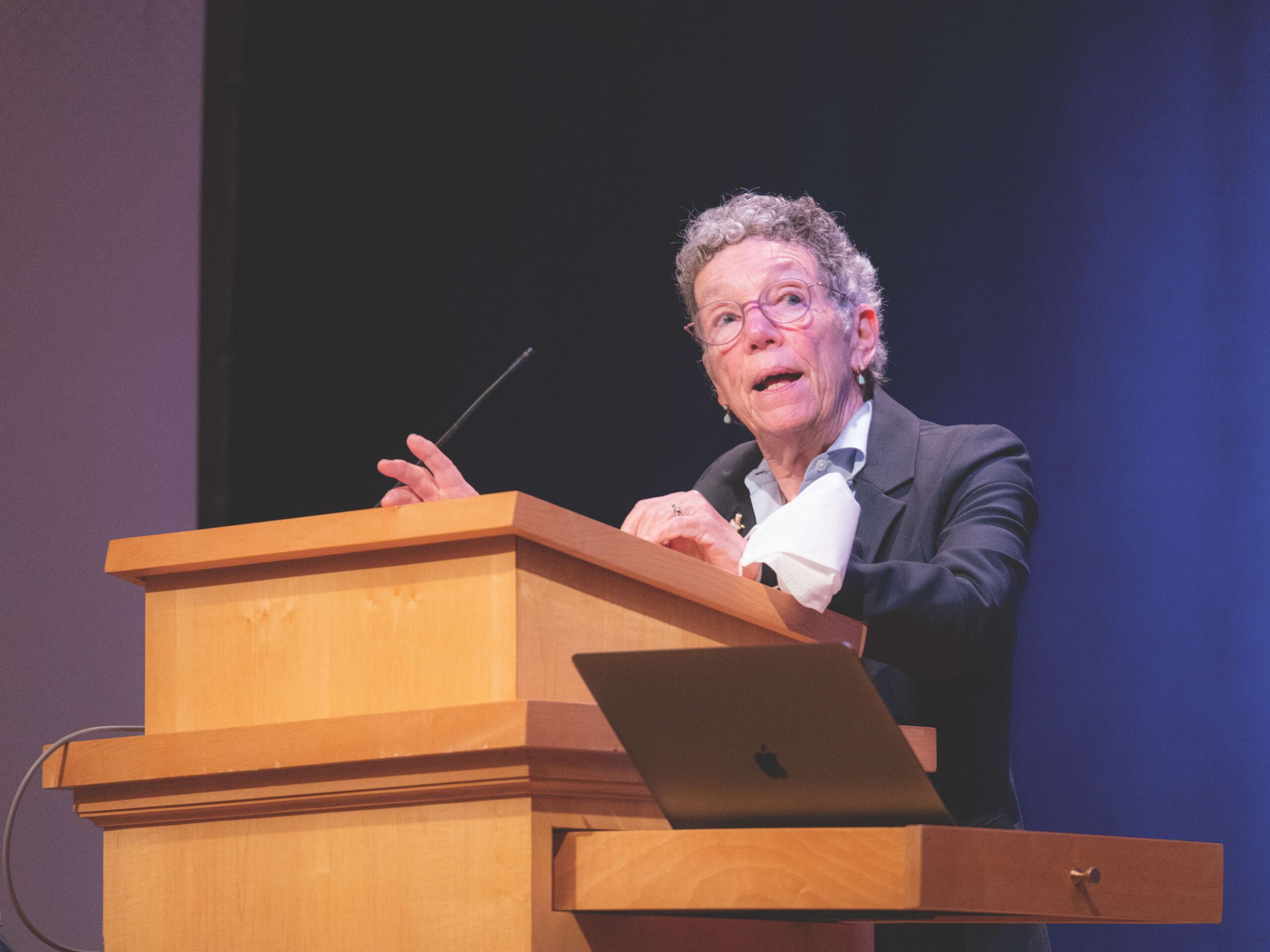Say ‘Challah!’: UMich’s Dash Moore talks mid-century urban Jewish photography
October 27, 2023
 Alex Spear
Alex SpearOn Tuesday night, Bowdoin welcomed Deborah Dash Moore, a professor of history and Judaic studies at the University of Michigan, to a crowded Kresge Auditorium as this fall’s Harry Spindel Memorial Lecture.
Since 1977, the Spindel lectureship has brought Jewish artists, writers and academics who study Jewish topics to Bowdoin. Dash Moore, a historian of American Jews, spoke at this year’s lecture about her most recent book, “Walkers in the City: Jewish Street Photographers of Midcentury New York,” which examines photographs taken by working-class Jews in twentieth-century New York City.
For roughly an hour, Dash Moore spoke about the photographers and photographs she explores in her book to a group of students, faculty and community members, many of whom were photographers or Jews themselves.
Dash Moore explained how the development of photography and subsequent dissemination of relatively low-cost cameras afforded Jewish New Yorkers new opportunities to explore the city that they previously did not have, equipped with the power of a camera.
“A significant cohort of these young Jewish men and women embraced photography and its possibilities,” Dash Moore said. “A camera’s basic documentary potential presented an intrepid New Yorker with a world of challenges: how to see—how to review—the street and make sense of its traditions and its occasional outbursts of chaos with their urban smarts and small cameras.”
Dash Moore then shifted her focus to discussing the specific photos taken by Jewish photographers Morris Engel, Sid Grossman and Helen Levitt, among others. She discussed the gendered dynamics of photography, specifically in relation to the male gaze, and the skills that made a good photographer, including “luck and pluck, patience and skill.”
The photos Dash Moore examined included photos of New Yorkers watching other New Yorkers, New Yorkers gathering at restaurants and storefronts and New Yorkers at Coney Island. Many of these photos included groups of younger city dwellers gathering in a way the urban elite at the time didn’t appreciate.
“Reformers have long observed city people loitering on busy corners, hanging around in candy stores and bars and drinking soda pop on stoops and have passed a judgment that most of which is, ‘this is deplorable,’” Dash Moore said. “Photographers disagreed. They often pictured these groups, rarely presenting them in a threatening or negative light.”
Many Bowdoin students and faculty members enjoyed the event, including Senior Lecturer in Environmental Studies and co-chair of the Spindel Lecture fund, Jill Pearlman. Pearlman’s pedagogy focuses on architecture and urbanism, and she serves as one of the advisors for the Urban Studies minor.
“You can’t understand the urban landscape of New York without factoring in the Jews,” Pearlman wrote in an email to the Orient. “The impact of the Jews on the urban landscape has been felt in many ways.”
Pearlman also discussed factors behind bringing in Dash Moore, including relevance of her work to current Bowdoin course offerings, namely her own “City, Anti-City” course and Professor of Art Michael Kolster’s documentary photography seminar.
“Because of that, we knew we would have an engaged (and captive) audience,” Pearlman wrote.
Elias McEaneney ’27, a student in Pearlman’s “City, Anti-City” course, enjoyed how Dash Moore’s talk blended history with art.
“One of the biggest things I took away from the lecture was a glimpse into what it’s like to try and analyze history not from a purely scholarly lens,” McEaneney said. “I found myself viewing these photos the way I would view them as an artist as well, incorporating context and my understanding of the principles of art into the greater understanding of the photos.”

Comments
Before submitting a comment, please review our comment policy. Some key points from the policy: